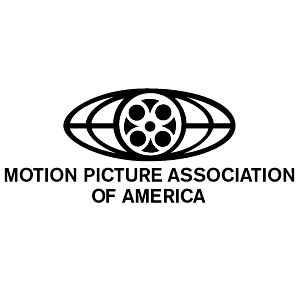The Problematic MPAA

If you watch movies you’re likely familiar with the MPAA’s (Motion Picture Association of America) rating system, G and PG for family movies,PG-13 for teenagers and up, and R for adults only. But these aren’t hard and fast rules, in fact more often than not there are exceptions whether its an exceptionally scary PG-13 movie that avoided a higher rating on a technicality or a fairly tame R one that was given the rating for containing a couple curse words.
There are many examples of different and many times unfair double standards in the way the MPAA rate’s their films, take The Dark Knight and The King’s Speech. The Dark Knight contains what Common Sense Media calls “Extensive, intense violence.” The movie contains many violent sequences with stabbings, shootings and explosions and a high death count, so one would assume that it would get an R rating for violence, But that is not the case. It is rated PG-13 for “intense sequences of violence and action, some sensuality and language.” Now take a look at The King’s Speech A film about King George IV’s friendship with his speech therapist that was rated R for language. The movie is fairly tame other than one scene that uses the “F” and “S” words repeatedly maybe 12 times each, the scene is done comedically and is less than two minutes in length. The movie was given a R rating for “some language” despite containing no sex, nudity or violence, due to the MPAA only allowing one non-sexual use of the F word in PG-13 movies.
This isn’t a hard and fast rule either, the MPAA allowed more than one use of the word in many films with as many as four in movies like Non-Stop and Million Dollar Baby, so we have to ask why are different movies held to different standards? While The King’s Speech admittedly does use the word more, it adds to the story and isn’t directed towards anyone, which proves it could have been one of the MPAA’s famous exceptions. Another heavily criticized element of the MPAA is the difference in the way they rate movies from big studios and independent ones; one of the most famous examples of this is the 1973 film The Exorcist.
The Exorcist contains many gruesome scenes and graphic sexual language but was still given an R rating instead of an NC-17 because the head of the MPAA said it was an “important film” and released it without any cuts. Many theatres refused to let children and teens in and it was even made illegal to allow any minors into the theatres showing it in Washington D.C. Many would wonder why it could have evaded a NC-17 rating, But former New Yorker film critic Pauline Kael may have answered that question in her review of the film “If The Exorcist had cost under a million, or had been made abroad, it would almost certainly be an X film, but when a movie is as expensive as this one, the MPAA rating board doesn’t dare to give it an X.” She argues that the movie would have been given an X rating (1973 Equivalent to NC-17) if the movie hadn’t been high budget and produced by a big studio. Now this seems more than likely considering that this is an issue even today.
This isn’t the only time the MPAA has been criticized for its unfair ratings; they frequently are under fire for their sexist and homophobic way of rating. This mainly stems from the double standards in how they rate sex scenes. In many cases they will allow more sex scenes that are between heterosexual couples and focus on the male in R rated movies but will then give movies with sex scenes that focus on women or LGBT couples an NC-17 ratings.
Some examples of the former that were had to be edited or that challenged the MPAA to receive an R rating are Blue Valentine, Charlie Countryman and Requiem for A Dream with the latter being present not only in sex scenes but in how they rate all movies, the movie Boys Don’t Cry it a prime example of this. The movie is centered around a trangender man and his relationships, the prejudice he faces and the pressure he feels to keep it a secret. The movie was sent to the MPAA and was originally given a NC-17 rating, the reasoning they gave being very nitpicky and for miniscule details, In other words they saw a story depicting a LGBT person and then found any reason they could to prevent people from seeing it. This is a problem even today with many movies featuring LGBT characters being given higher ratings for things like “Pervasive language” while movies depicting straight characters get away with it while still maintaining lower ratings.
As you can see the MPAA rating system is an outdated organization given too much power that they use to unfairly censor the public and should be abolished or at the very least given some major changes.You might be thinking ‘But how will we know what movies are appropriate for a certain age group?’ Well there are many websites such as Plugged In and Common Sense Media that suggest what specific age a movie would be appropriate for, IMDB even specifically breaks down any elements in a movie that may be unsuitable for children. So the next time you are unsure about a movie based on its MPAA rating look into it from other sources, you might find that it’s not as bad as you think.
Sarah Conroy (She/Her) is a Senior at Shaker High School and this is her first year as a the Lead Writer fourth year with The Bison as a member of the...

